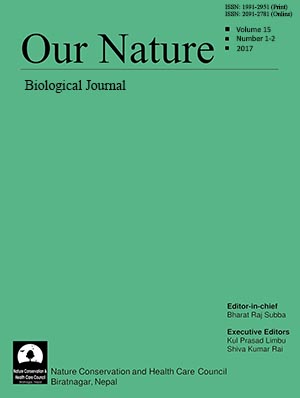ELISA validation and determination of cut-off level for chloramphenicol (CAP) residues in shrimp and fish
DOI:
https://doi.org/10.3126/on.v15i1-2.18789Keywords:
CCβ, Photometry, Analyte sample, Fish monitoringAbstract
An analytical validation of enzyme-linked immunosorbent assay (ELISA) screening for detection of chloramphenicol (CAP) in shrimp and fish was conducted according to the Commission Decision 2002/657/EC and guidelines for the validation of screening methods for residues of veterinary medicines. The analyte was extracted from shrimp and fish with ethyl acetate mixture, and CAP concentrations were measured photometrically at 450 nm. The recovery rate of the analyte from spiked samples was 80%. For the laboratory the cut-off level of CAP in fish and shrimp as the minimum recovery was established along with detection capability (CCβ). No relevant interferences between matrix effects and structurally related substances including florfenicol and thiamphenicol were observed. The experimental results were quite satisfactory and ELISA method was found very useful for determination of CAP residues in shrimp and fish monitoring.Downloads
Download data is not yet available.
Abstract
1818
PDF
1130
Downloads
Published
2017-12-25
How to Cite
Sarwer, M. G., Rony, M. M. H., Sharmin, M. S., Chowdhury, A. J., & Bhowmik, S. (2017). ELISA validation and determination of cut-off level for chloramphenicol (CAP) residues in shrimp and fish. Our Nature, 15(1-2), 13–18. https://doi.org/10.3126/on.v15i1-2.18789
Issue
Section
Articles
License
This license enables reusers to distribute, remix, adapt, and build upon the material in any medium or format for noncommercial purposes only, and only so long as attribution is given to the creator.




